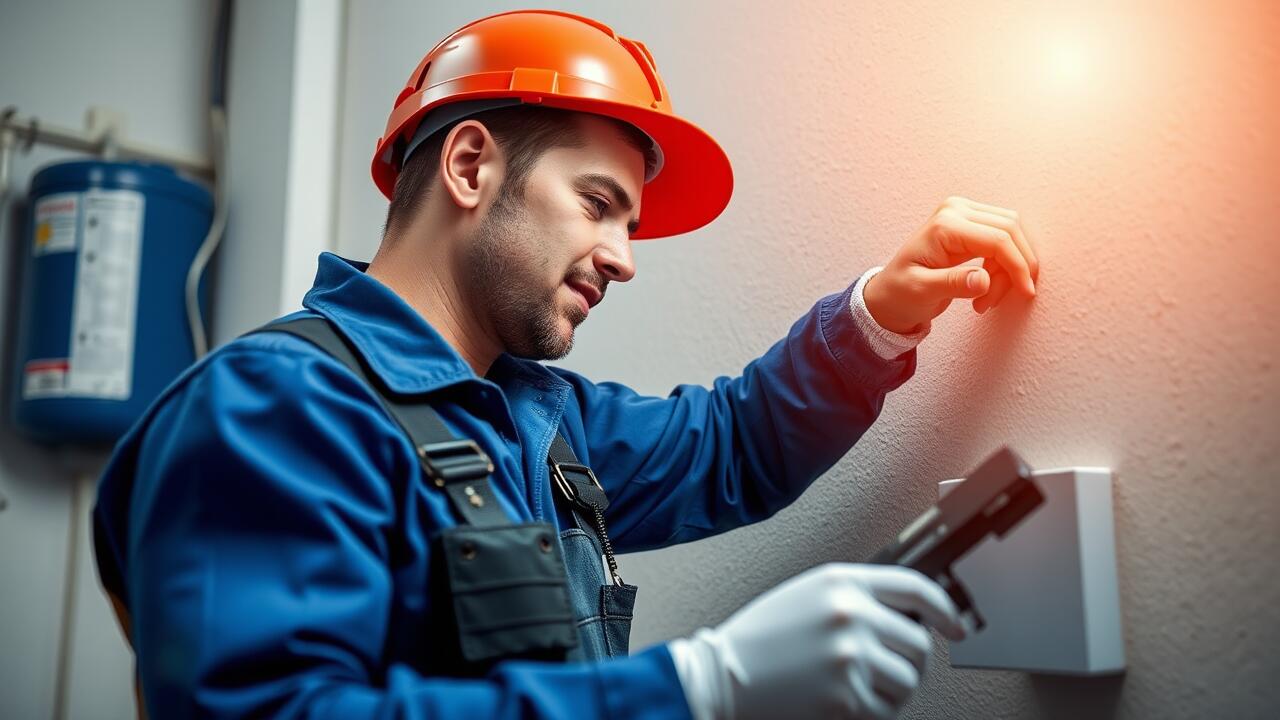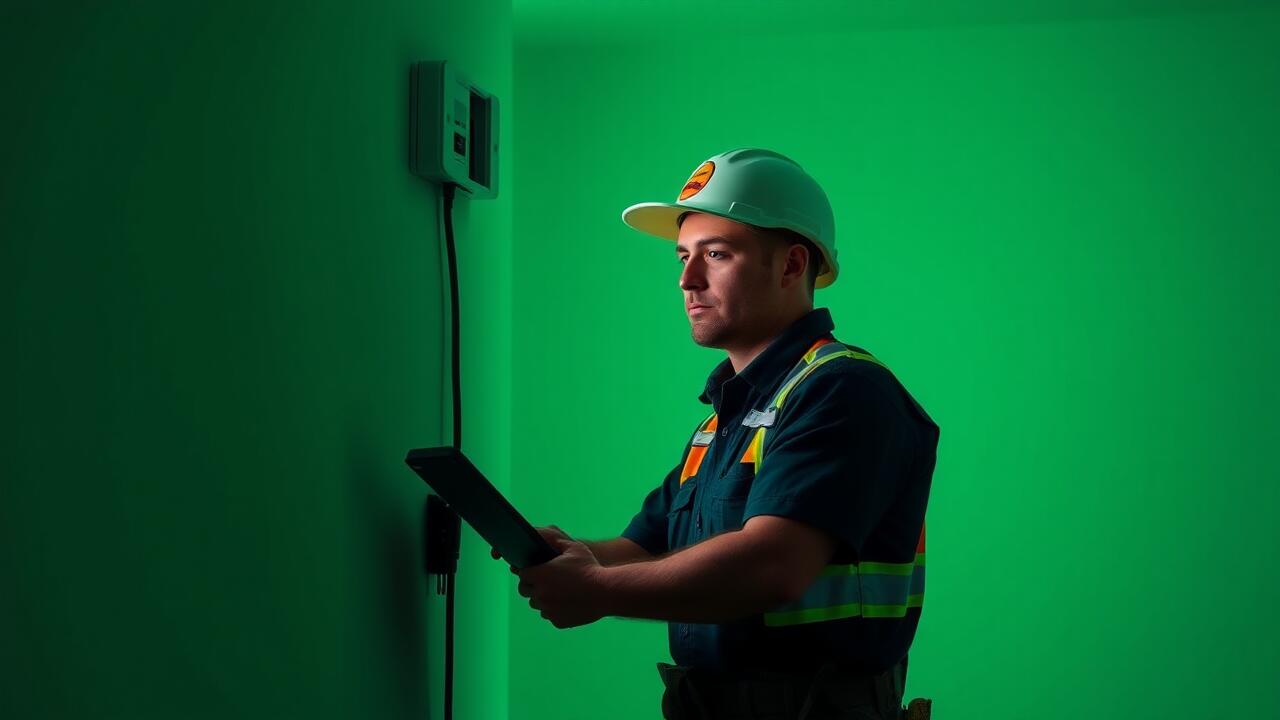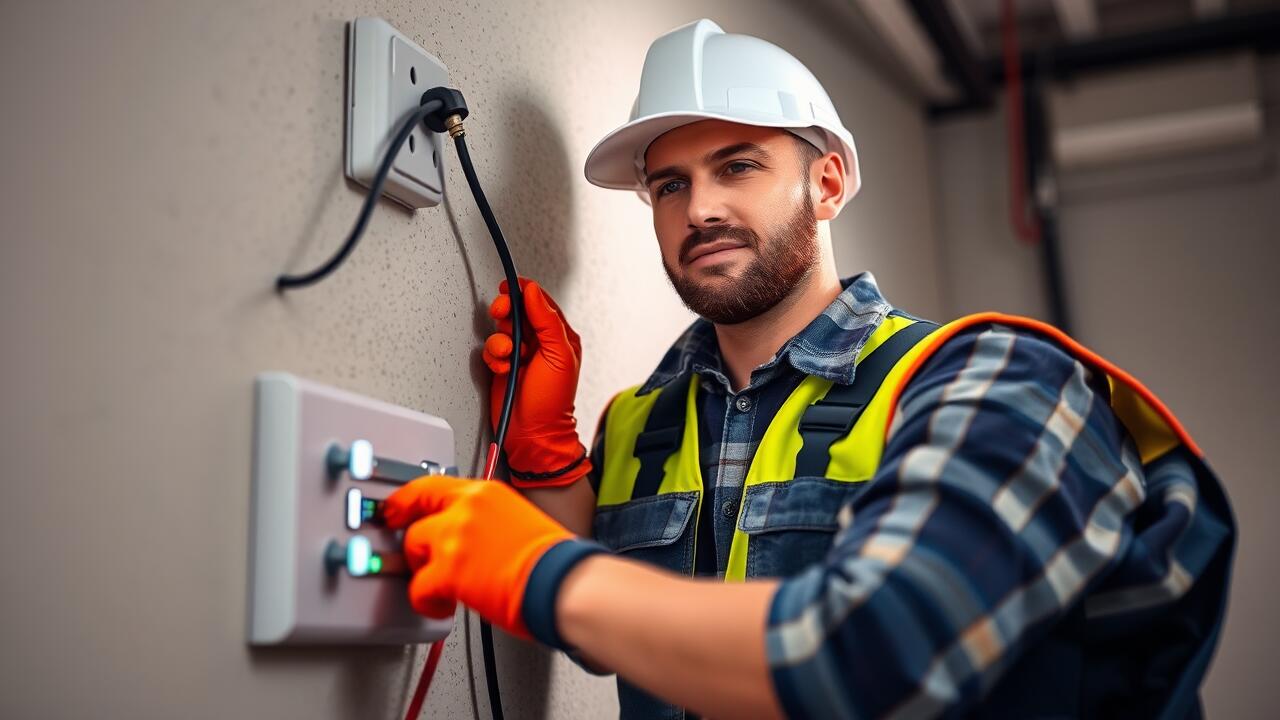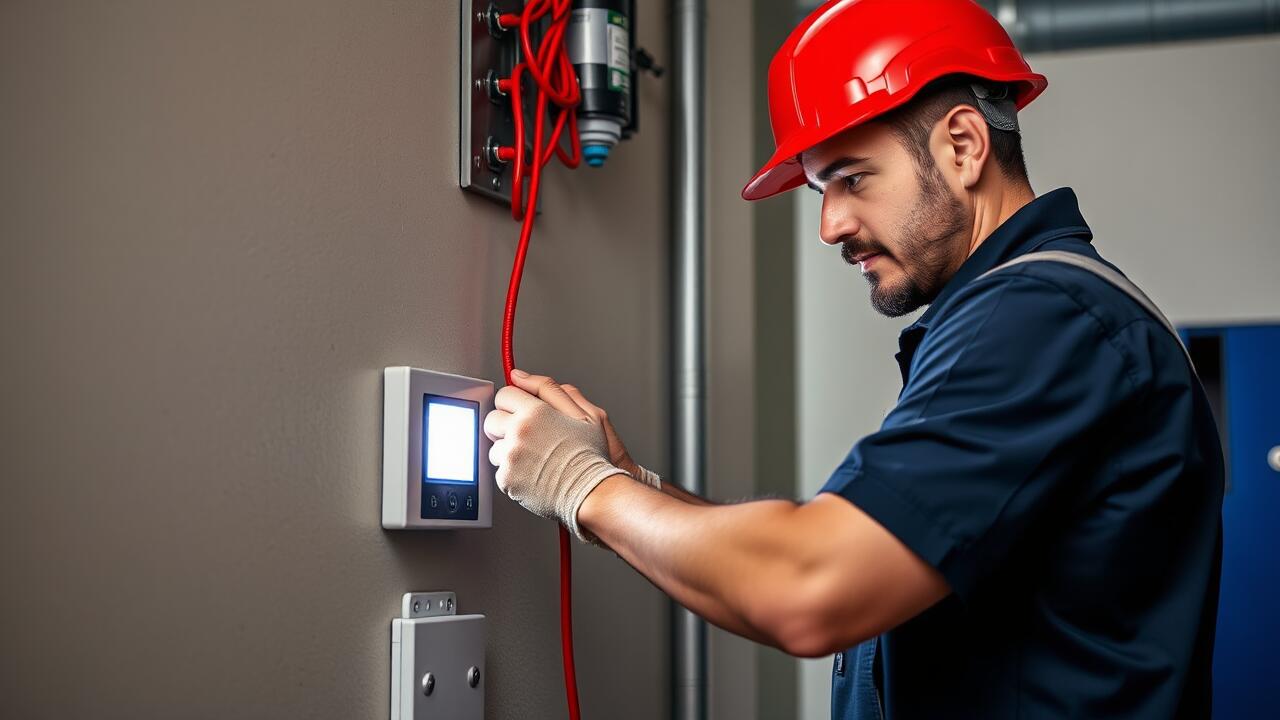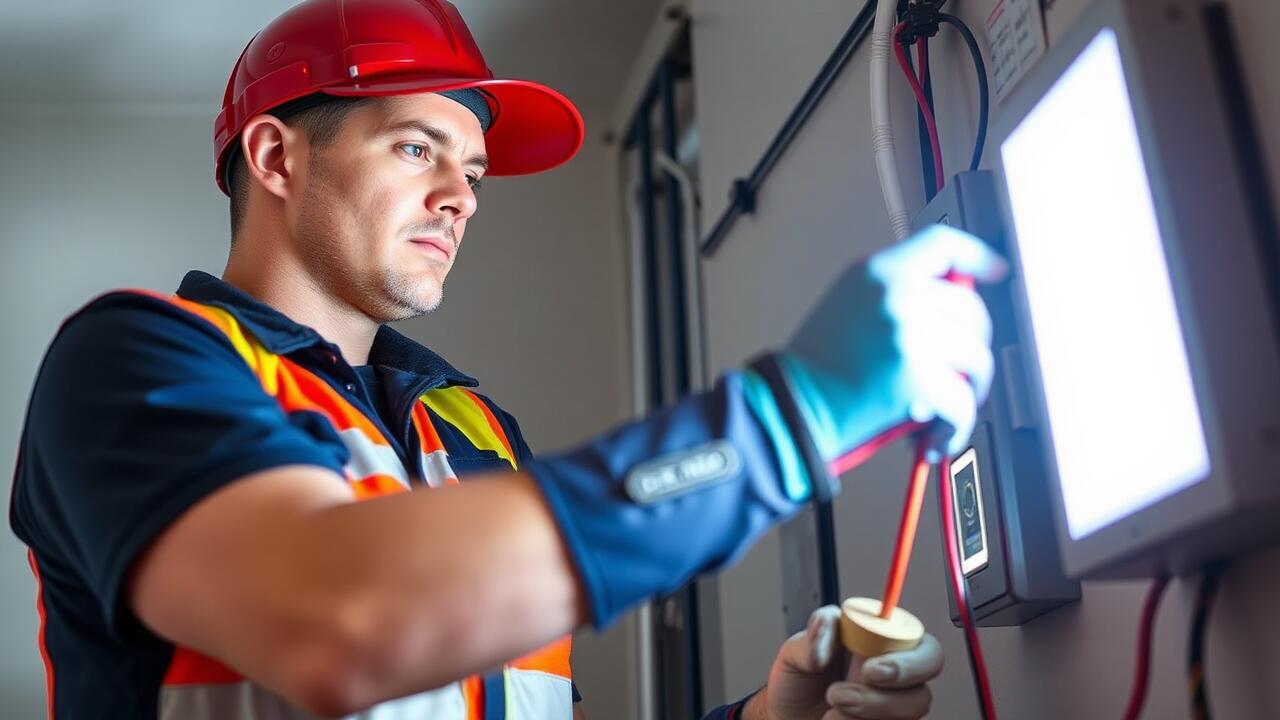
Installation Process Overview
The installation of emergency lighting requires careful planning and execution to ensure safety during critical situations. Initially, it is important to assess the specific needs of the building and identify the most effective locations for lighting installation. Consideration should be given to factors such as exit routes, high-traffic areas, and potential hazards. Engaging a qualified professional, such as a Montrose, Houston Emergency Electrician, can offer valuable insights into compliance with local building codes and regulations.
Once the assessment is complete, the installation process begins with gathering the necessary materials and tools. Follow the manufacturer’s guidelines for the chosen emergency lighting system, ensuring that wiring and fixtures are compatible with the building’s infrastructure. Proper mounting of fixtures is crucial for maximizing visibility and functionality. Finally, conducting thorough tests of the system will verify that it operates efficiently and meets the safety standards required for emergency situations.
Step-by-Step Guide for Effective Setup
The first step in the installation process is to assess the property and determine the best locations for emergency lights. Consider areas that require illumination during power outages, such as stairwells, exits, and hallways. Mark these areas clearly to ensure proper alignment and visibility once the fixtures are installed. Contacting a qualified professional, like a Kingwood, Houston Emergency Electrician, can provide valuable insight on local codes and standards.
Next, gather all necessary materials and tools before beginning the installation. This includes the emergency lights, mounting hardware, and basic tools like drills and screwdrivers. Ensure that you follow the manufacturer's instructions closely. Pay attention to wiring connections if the fixture requires hardwiring. If you are uncertain at any step of the process, consulting a Kingwood, Houston Emergency Electrician can help avoid mistakes and ensure a safe installation.
Maintenance Requirements for Emergency Lighting
Regular maintenance of emergency lighting systems is crucial to ensure their functionality during crises. Scheduled inspections involve checking batteries, bulbs, and overall system performance. Documentation of testing results is essential, as it helps track any issues that may arise and ensures compliance with local regulations. These checks typically include verifying that lights activate when needed and that backup power sources are operational.
In Montrose, Houston, contacting a qualified electrician can simplify this process. A local emergency electrician can perform thorough maintenance checks and provide necessary repairs or replacements. Their expertise helps maintain the integrity of the system, ensuring that emergency lighting remains reliable during power outages or emergencies. Regular professional service minimizes the risk of malfunction and maximizes the effectiveness of your emergency lighting setup.
Ensuring Longevity and Reliability
To ensure the longevity and reliability of emergency lighting systems, regular inspections play a crucial role. A thorough check of the devices will help identify any potential issues before they become critical failures. It's important to keep an eye on battery performance, as old or worn-out batteries can significantly impair the functionality of the system. Scheduling routine maintenance can prevent unexpected disruptions, thus guaranteeing that the lights operate effectively when needed most.
In addition to regular inspections, proper installation also contributes to the durability of emergency lighting. Engaging a qualified professional, such as a Gulfton, Houston Emergency Electrician, ensures compliance with local codes and standards. This expertise minimizes the risk of wiring issues and other installation-related problems. Keeping the lighting fixtures clean and free from obstructions will further enhance their performance and reliability. By prioritizing these aspects, building owners can significantly extend the life of their emergency lighting systems.
Troubleshooting Common Issues
When dealing with emergency lighting systems, problems can arise that affect both functionality and reliability. One common issue is flickering lights, which may indicate loose connections or circuit problems. Inspect the wiring and connections closely to ensure a secure fit. If the flickering persists, consult a professional for a thorough evaluation of the electrical system.
Another frequent concern is battery failure, which can jeopardize the whole emergency lighting setup. Regularly check the batteries for signs of wear or leakage. If the batteries are over three years old, consider replacing them to ensure optimal performance. For residents in the Montrose area, enlisting a Montrose, Houston Emergency Electrician can provide expert assistance and peace of mind when troubleshooting these issues.
Identifying and Resolving Common Problems
Identifying common issues with emergency lighting systems typically starts with an evaluation of the light fixtures. Burned-out bulbs or damaged units are frequent problems, often noticeable upon routine inspections. It is essential to frequently test the system to confirm its functionality during an emergency. If bulbs are non-operational or flickering, replacing them promptly can prevent further complications during a power outage.
For more complex issues, malfunctioning batteries or faulty wiring might be at play. In such instances, it is prudent to consult with a professional like a Montrose, Houston Emergency Electrician. They possess the expertise to diagnose the problem effectively and ensure that repairs meet safety regulations. Performing regular checks and maintenance can significantly reduce the likelihood of these issues arising, ultimately enhancing the reliability of the emergency lighting system.
FAQS
What is the purpose of emergency lighting?
Emergency lighting is designed to provide illumination during a power failure or emergency situation, ensuring safe evacuation and aiding in the visibility of safe exit routes.
How do I determine the number of emergency lights needed for my space?
The number of emergency lights required depends on the size of the area, the layout, and local building codes. Generally, you should assess the space to ensure adequate coverage and visibility along escape routes.
What maintenance is required for emergency lighting systems?
Regular maintenance for emergency lighting systems includes monthly testing of the lights, annual inspections by a qualified technician, and ensuring that batteries are replaced as needed to guarantee functionality.
What should I do if my emergency lights are not functioning properly?
If your emergency lights are not functioning, first check the bulbs and batteries. If they appear to be in good condition, consult the troubleshooting section of your manual or contact a professional for assistance.
Are there specific regulations regarding emergency lighting installation?
Yes, regulations can vary by location, but many areas follow the National Fire Protection Association (NFPA) guidelines or local building codes. It's important to check the requirements in your jurisdiction before installation.
